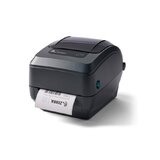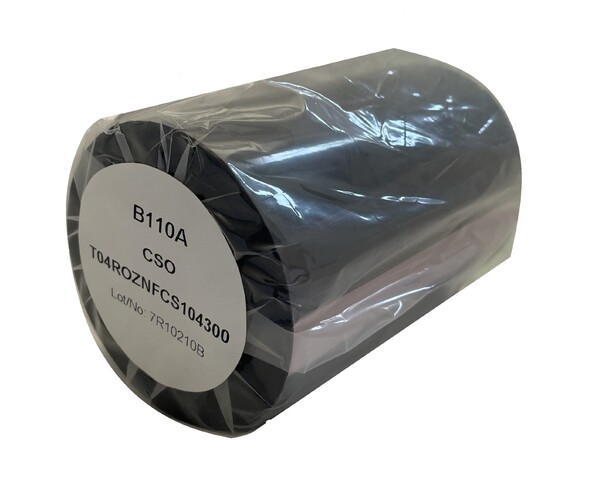Thermal Printing Essentials: From Labels to Ribbons

Thermal printing technology has revolutionised how businesses handle labelling, providing a fast, efficient, and reliable method to create high-quality labels for various applications. Thermal printer labels are used extensively across numerous industries, including retail, healthcare, logistics, and manufacturing, for price marking, inventory management, shipping, and patient identification.
There are two main types of thermal labels: Thermal Direct Labels, which are printed using heat-sensitive material that blackens when it passes under the printer's thermal print head, and Thermal Transfer Labels, which use a thermal transfer ribbon during the printing process for a more durable and long-lasting print. This blog post will explore the essentials of thermal printing, from labels to ribbons and everything in between.
The Basics of Thermal Printing Technology
Thermal printing technology operates on the principle of heat transfer to produce printed information on labels or tags. Direct thermal printing relies on chemically treated, heat-sensitive media that darken when exposed to the thermal print head. Direct Thermal printers offer simplicity and cost-effectiveness for applications where the label's lifespan is short, without the need for ink, toner, or ribbons.
In contrast, thermal transfer printing uses a heated ribbon to transfer ink onto the label material, which allows for a greater variety of substrates and is more resistant to elements such as UV light and moisture. This durability makes thermal transfer printing the preferred choice for labels that need to endure harsh conditions or long-term use. Both methods boast considerable advantages, such as high-speed printing, minimal maintenance, and the ability to print detailed barcodes and text, making thermal printing an indispensable tool for label production in today's fast-paced business environment.
Understanding Thermal Direct Labels
.jpg)
Direct thermal labels are an efficient solution for numerous labelling needs, particularly for businesses looking for a quick and cost-effective way to produce high-quality, short-term labels without the extra inventory of ink or ribbons. These labels are engineered with a particular heat-sensitive layer that blackens upon direct contact with the thermal print head, thus creating the desired image or text.
This label is ideal for applications where the label is not exposed to long-term environmental stresses such as direct sunlight or extreme temperatures, making it well-suited for indoor uses like printing receipts, shipping labels, or event name tags. They are commonly used in sectors like retail for price labelling and in logistics for shipping labels, where they can be easily scanned and are not required to last for extended periods.
Exploring Thermal Transfer Labels
Thermal transfer labels stand out in scenarios where label longevity and resistance to environmental factors are paramount. Unlike their direct thermal counterparts, Thermal Transfer labels utilise a heat-sensitive ribbon during printing, transferring ink onto the label material, thus creating a high-quality print that is less vulnerable to fading, abrasion, and smudging. These labels can be printed in a broader range of substrates while catering to various industry labelling requirements.
Thermal transfer labels are the go-to choice for applications in outdoor settings or where labels must withstand exposure to chemicals, extreme temperatures, or continuous handling. They are extensively used in manufacturing, automotive, healthcare, and electronics sectors, where labels must remain readable throughout the product's life cycle.
The Role of Thermal Transfer Ribbons

Thermal Transfer ribbons are a critical component in thermal transfer printing. These ribbons are coated with wax, resin, or a combination of both, which melts onto the label material when heated by the printer's print head. This process ensures that the image or text produced is crisp, durable, and resistant to the environmental factors that typically degrade print quality.
The precise match between the ribbon material and the label substrate is essential to produce a long-lasting print, making thermal transfer ribbons fundamental to achieving labels that can withstand harsh conditions and remain legible for long periods, crucial for tracking, safety, and compliance across various industries.
Selecting the Right Thermal Printer Label
When choosing the correct thermal printer label for your needs, several factors must be considered to ensure optimal performance, longevity, and compliance. Firstly, assess the environmental conditions the label will face. For labels exposed to high temperatures, sunlight, or chemicals, a thermal transfer label with a resin-based ribbon is preferable due to its enhanced durability. In contrast, wax ribbons may suffice for general-purpose labelling within indoor settings where the labels are less likely to come in contact with harsh elements.
Consider the surface and shape of the items being labelled. For instance, certain adhesives are designed for smooth, flat surfaces, while others may be more suited for curved or rough textures. Moreover, think about the level of detail and size of text or images that must be printed. Applications requiring fine print or intricate barcodes demand high-quality print resolution.
Lastly, factor in the specific application and compliance requirements. In healthcare, labels might be subject to sterilisation processes. In contrast, in manufacturing or logistics, they need to be scannable over long periods or withstand the rigours of heavy-duty handling. Selecting a label tailored to the application's unique demands is crucial to maintaining integrity and functionality throughout the product's lifecycle.
Selecting the Best Thermal Transfer Ribbon
Choosing the right thermal transfer ribbon is essential for achieving the highest print quality and durability for your labels. Here are some tips to guide your selection process:
- Match Ribbon to Label Material: The ribbon type should coordinate with the label material to ensure proper adhesion and print longevity. Resin ribbons are ideal for synthetic labels, whereas wax/resin ribbons best-fit paper and synthetic labels.
- Consider the Print Environment: Ribbons must withstand the environmental conditions where they will be applied. For labels that will face outdoor elements, heat, or chemicals, choosing ribbons with strong resistance properties is critical.
- Understand the Application Requirements: Different applications may have unique demands, from compliance labelling in the medical field to inventory tagging in logistics. Ensure the ribbon chosen meets these specific standards.
- Assess Longevity Demands: If the print must remain legible for an extended period or through rough handling, a durable ribbon such as a full resin ribbon is recommended to prevent fading and smearing.
Conclusion
Thermal printing has become essential to modern business operations due to its efficiency, reliability, and versatility. With the two main types of thermal labels – Thermal Direct Labels and Thermal Transfer Labels – businesses can choose the perfect solution for their specific needs. Additionally, selecting the correct type of Thermal Transfer Ribbon is crucial in ensuring long-lasting and durable print results. By understanding the basics of thermal printing and its different components, businesses can optimise their labelling processes and improve efficiency.
